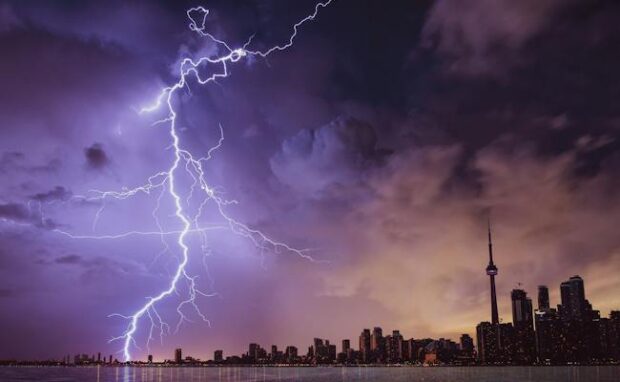‘Smart Rainforest’ to launch in Australia
Global technology firm NTT Group and registered Australian charity ClimateForce will create the world’s first Smart Rainforest. It will use the former’s Smart Management Platform technology to collect and analyze enough data to restore the Daintree Rainforest despite its multiple invasive species. Soon, its system could become a model for other environmental efforts worldwide.
Soon, its system could become a model for other environmental efforts worldwide. Artificial intelligence can collect and process more data than humans, which could help find solutions never thought possible.
Nowadays, more are taking environmental preservation seriously, but we need better methods for better results. This Smart Rainforest could be a new way to protect flora and fauna worldwide. This article will elaborate on this interesting forest restoration project using AI. Later, I will illustrate how this might work by discussing how artificial intelligence predicts weather patterns.
How will the Smart Rainforest work?

NTT Group and ClimateForce will use their Smart Management Platform (SMP) Technology and Analytics. It is an artificial intelligence tool to gather and analyze data to evaluate various organic reforestation techniques.
As a result, Interesting Engineering says the collaborative project is a proving ground for innovations that protect biodiversity and help mitigate climate change. “ClimateForce is a proving ground for technologies that protect biodiversity and help mitigate climate change,” ClimateForce CEO Barney Swan stated.
“The generous support from NTT and NTT DATA will help us quickly expand our initiative in the Daintree and speed up our goal of developing replicable models that regenerate ecosystems, protect biodiversity, and foster resilient local economies in other locations.”
The Australian Museum says the Land Down Under has experienced the worst of climate change, such as higher temperatures, extreme droughts, and excessive flooding. Consequently, the country is doing more to improve its environment.
You may also like: Amazon deforestation rises says satellite data
“Our new extremes of heat and other severe weather mean we now need to re-imagine how our towns and cities function, ensure we provide essential climate safety services, and rethink how we go about our daily lives and care for others,” the Australian Climate Council stated.
NTT Group and ClimateForce will apply AI on a portion of the Daintree Rainforest. Locals initially designated it for agriculture decades ago, but invasive species now overrun the area.
Hopefully, artificial intelligence could help restore this wilderness to its former glory. As a result, other countries may do the same and eventually improve our environment.
Other ways to monitor nature with AI

Weather monitoring is also important in maintaining forests, so let’s discuss how AI improves it. After all, the Smart Rainforest would likely use similar tools for Daintree.
AI meteorology models collect data from multiple sources like weather stations, radar, and satellites. A past Inquirer Tech article says they include wind speed, humidity, temperature, etc.
Machine learning recognizes patterns to make short-term predictions. Data analytics tools process large data sets quickly. Also, their cloud computing stores huge amounts of data.
They offer faster and more accurate localized weather predictions. Moreover, these systems provide smaller forecasts for specific areas. They consistently learn as they receive more data, improving their accuracy further.
We have apps for virtually everything nowadays, so seeing some for AI weather forecasting is unsurprising. They receive processed data from meteorology models so experts can view them anytime and anywhere.
The Smart Rainforest would likely be a part of the Internet of Things (IoT), which involves physical devices linking online. Consequently, we create a world where everything links to the Internet.
Nowadays, they use AI weather forecasts to activate specific features automatically. For example, a smart home can use information from an AI weather app to adjust temperature based on weather conditions.
If there’s a heatwave coming, it will turn on the air conditioning or lower the temperature further. If there’s a thunderstorm, a smart home can close windows to prevent rain from entering.
AI weather systems can help countries prepare for disasters and evacuate people immediately. That is why I discussed in another content that the Philippines is developing an AI disaster response program.
You may also like: AI beats conventional weather forecasting
The Philippine Information Agency (PIA) says the Department of Science and Technology is working on the DATOS or Remote Sensing Data Science. “Immediately kasi in disaster management actually you want to know where the affected areas are,” Dr. Enrico Paringit, executive director of DOST-PCIEERD, said.
“This means you have to come out where they are so you can provide the necessary response like rescue, evacuation, things like that,” Dr. Paringit added.
“The geo-hazard maps will show what will happen. The DATOS will show what is happening. For example, there was heavy rain last night, and when the satellite passes by, we will have data showing the extent of the flooding.”
Conclusion
ClimateForce and NTT Group will deploy artificial intelligence into the Daintree wilderness to turn it into a Smart Rainforest. It will collect and analyze environmental data for testing organic reforestation techniques.
Such strategies likely take years to implement, so the latest technologies can simulate their effectiveness before launch. More importantly, other countries may deploy such strategies soon.
Learn more about the Smart Rainforest project on the NTT Group press release at BusinessWire. Also, check the latest digital tips and trends at Inquirer Tech.